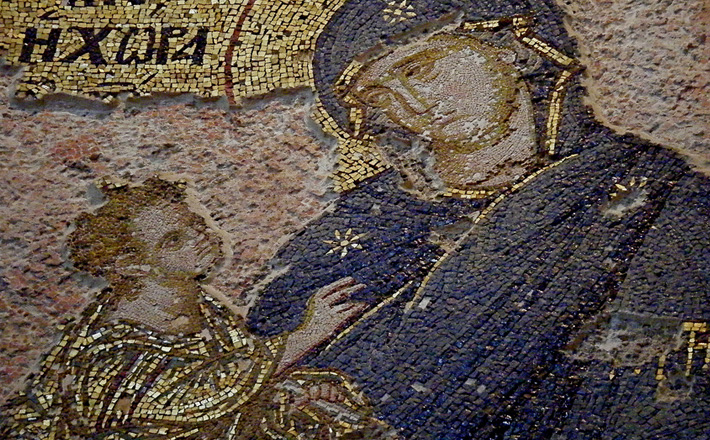Commentary on Luke 2:1-14 [15-20]
Jesus is born among animals.
Donkeys and cows witness the birth of the Lamb of God. Angels proclaim. Shepherds shudder. Still four-legged creatures welcome the One who would walk so intimately with humanity.
I do not profess to be a scholar of animal studies. I am not even a pet owner. Yet, that the nativity scene is nestled in straw and cattle feed is compelling. In contrast to a “Highly Exalted” emperor named Augustus, for that is what his name really means, is a baby dwelling with lowly animals. This is not to imply or suggest that animals are not worth human care and compassion. Nor does this essay posit a “low” designation as paralleling that which is expendable. Perchance Luke’s Jesus is so in touch with the least that he comes to be with all of creation—humans and animals.
Jesus does not enter the world on palatial grounds. He is almost on the ground as feeding troughs provided easily access to its intended. That which is high will be soon brought low. That which is born low will become the paradigm of exaltation. Animals from below and angels from on high both pay homage to the babe born to Mary and Joseph.
In a literary move that highlights existential reversal, the Gospel of Luke disrobes imperialistic culture through One who is “wrapped in bands of cloth and lying in a manger” (Luke 2:12). Luke sets the birth of Jesus during a period of registration for taxation. The author’s dating is amiss in that Quirinius’ registration did not occur until 6-7 CE. Jesus was born 3-4 BCE. However, the point is it situates Jesus in an environment where people are decentered and dehumanized due to Pax Romana (the so-called peace of Roman). In a setting where those on top control what persons on the bottoms can and cannot do, Luke’s context was more akin to a pseudo-Peace of Rome.
The writer in this passage continues an examination of colonial-laden class conundrum. Mary, a teenager from Nazareth, is the human conduit through whom deliverance comes. This is a herculean task for someone of such humble beginnings. Mary is not a descendant of any Davidic great line of ancestors. She is not the wife of an esteemed husband like her cousin Elizabeth. To push more, she is not even married. Mary is a pregnant adolescent traveling with her fiancé.
She is at risk as a girl. She is socially in harm’s way because she lacks legal male covering. She faces physical detriment as one daring to give birth in the first century. Mary goes with Joseph to be counted—to be counted in the census, not to be counted as an animal, but as a human. Nevertheless, even animals glance upon the Holy One.
The shepherds also speak to the class conflict evident in Luke’s birth narrative. The first to witness the entrance of the Messiah are professionally acquainted with sheep messiness. Shepherds were deemed unclean and of ill-repute. To society they were dirty physically and morally. However, to challenge status norms, the Gospel of Luke records smelly shepherds as the official beneficiaries of the Good News.
The word about Jesus does not come to the emperor initially, but to persons most harmed by an imperial taxation system. In Bethlehem, the Son of the Most High is born to a girl of a low stature, in a lowly place, surrounded by barn animals with persons in a lowly profession as witnesses. How ironic that an angel tells the shepherds to seek the baby in Bethlehem, the city of David. This is a locale named for the great king who began his life as a lowly shepherd.1 Does it get any lower than this?
Luke’s birth account continues its high-low-highest dance in that it ends in exaltation. A multitude of heavenly hosts join an angel in offering the highest praise to God as shepherds watch. The story moves from a single angel conversing with earthly shepherds to several from the heavenly realm worshiping for all the world to see. The heavenly hosts add exponential divine value to what their fellow celestial being has heralded. There is a geographical shift in that the earth now witnesses heaven in action. As Jesus makes his entrance on earth, heaven reveals itself more so as the holy habitation of the God who sent Jesus.
What began with Jesus born in a manger full of animals climaxes into a majestic celebration of the Messiah.
Notes:
1 Stephanie Buckhanon Crowder, “The Gospel of Luke,” in True to Our Native Land: An African American New Testament Commentary,” (Minneapolis: Fortress Press, 2007), 162.


December 24, 2019